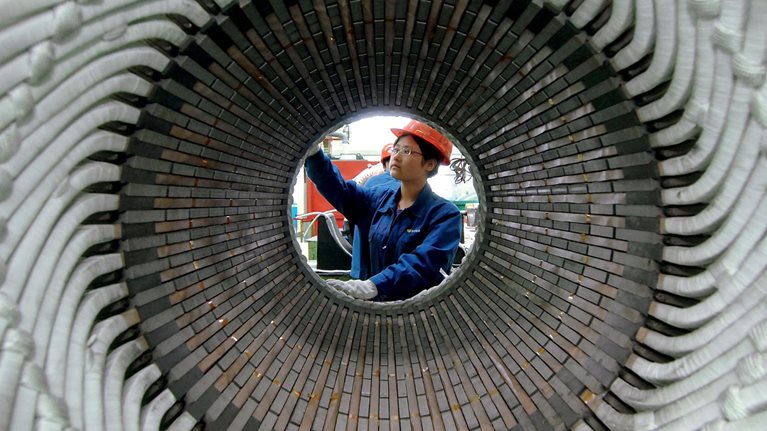China’s economy is starting its historic shift to a more consumption- and service-driven model that should help sustain the country’s growth, albeit at a slower rate, over the next decade and beyond. As November’s 18th congress of the Chinese Communist Party showed, new government policies are helping to move the economy in this direction, even though investment—the historical motor of China’s growth—will still command the lion’s share of the economy in the near term.
These new policies will favor household income growth, improve the social safety net, and support the expansion of the service sector and private enterprises, especially small and midsize businesses. Two markers of a more economically developed society will be the higher productivity of its workers and higher productivity and greater efficiency on the part of government. These trends will create more and better-paid jobs and thus raise the share of the national income in the hands of consumers—the key determinant of China’s future economic profile (exhibit).
Consumption is expected to overtake investment as the largest contributor to China’s GDP growth.

China’s expanding cities will play a major role in these trends. In particular, the accelerated rise of smaller cities will make a key contribution to growth: during the next two decades, the dozens of cities with current populations of less than 1.5 million will contribute 40 percent of the total increase in urban GDP. Cities with 1.5 million to 5.0 million inhabitants will contribute about 25 percent and existing megacities the balance.
A new report from McKinsey’s China office, What’s next for China?, identifies key areas companies should focus on to thrive there.
1. Embrace the new trends in urban development. Companies should design city-specific solutions—products, marketing approaches, and operating models—that meet the quite varied needs of the smaller cities that are expanding rapidly and underpinning China’s long-term growth. In addition, they should optimize their resources across the hub-and-spoke city clusters emerging throughout China. Hub cities will increasingly service the needs of the spoke cities, where most manufacturing takes place.
2. Focus on the growing demand for services and consumer goods. As disposable incomes rise, consumers will be able to buy more services and goods. That should spur the expansion of new service businesses ranging from catering to financial services, as well as the further expansion of demand for consumer products, across China’s immense and growing market. At the same time, business services will grow more quickly as the country’s economy continues to develop.
3. Foster new skills and innovation capabilities. The growth of the urban labor pool is slowing as the country’s population ages. Companies will have to increase their productivity through training, automation, more flexible production, and enhanced employee loyalty. They will also need to foster new skills, from strategic planning to the maintenance of high-tech equipment. At the same time, in parallel with the shift to an increasingly service- and consumption-led economy, China’s innovation capabilities can be expected to improve rapidly. Companies there should nurture them to develop products that meet the demands of this important and growing market and of other markets around the world.


